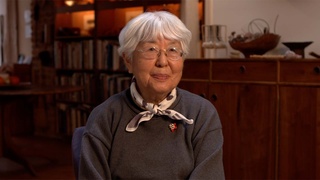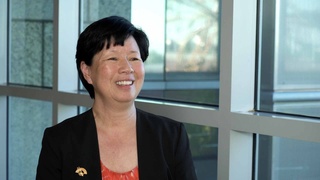Interviews
Learned what it meant to be called “Jap” in Heart Mountain
While we were in camp, I began to learn what it meant to be called “Jap.” All the time… Occasionally, the administration of the camp —which was all White—let us out on little tours, fieldtrips, you know, for children, fieldtrips to Cody, Wyoming, which was like, one of those single-street, towns in the middle-West...I don't know how your town was but, one or two main streets and that’s it. So, then, you see signs in the windows, “No Japs welcome here,” “You’re not...” any way, all kinds of handmade signs all around there, even from a child’s point of view you can tell the fieldtrip was ridiculous.
Date: September 15, 2017
Location: California, US
Interviewer: Jennifer Cool
Contributed by: Jennifer Cool, Matthew Purifoy
Explore More Videos

The riot in Manzanar
(b. 1921) Nisei veteran who served in the occupation of Japan

The Dopey bank that survived the war
(b. 1934) Award-winning Disney animation artist who was incarcerated at Topaz during WWII

Evacuated to the Jungle
(b. 1938) Philipines-born hikiagesha who later migrated to the United States.

Captured by Guerillas after bombing of Pearl Harbor
(b. 1938) Philipines-born hikiagesha who later migrated to the United States.

Grandfather picked up by US Army
(b. 1952) Former banking executive, born in Hawaii

Father's business partner operated their farming business during WWII
(b. 1935) Sansei businessman.

Father was convinced the constitution would protect him
(b. 1935) Sansei businessman.


The lack of discussion about family’s incarceration in Amache
Sansei judge for the Superior Court of Los Angeles County in California


Being Confused about Racial Identity in Postwar United States
(b. 1932) Nisei American stage, film, and TV actress

Grateful for The Quakers’ help in camp and finding jobs outside of camp
(b. 1923) Japanese American poet, activist

Her brother’s reasons as a No-No Boy
(b. 1923) Japanese American poet, activist

Her grandfather was pressured to teach Japanese
Sansei judge on the Superior Court of Los Angeles County in California

Neighbor took care of her mother after grandfather was taken by FBI
Sansei judge on the Superior Court of Los Angeles County in California
